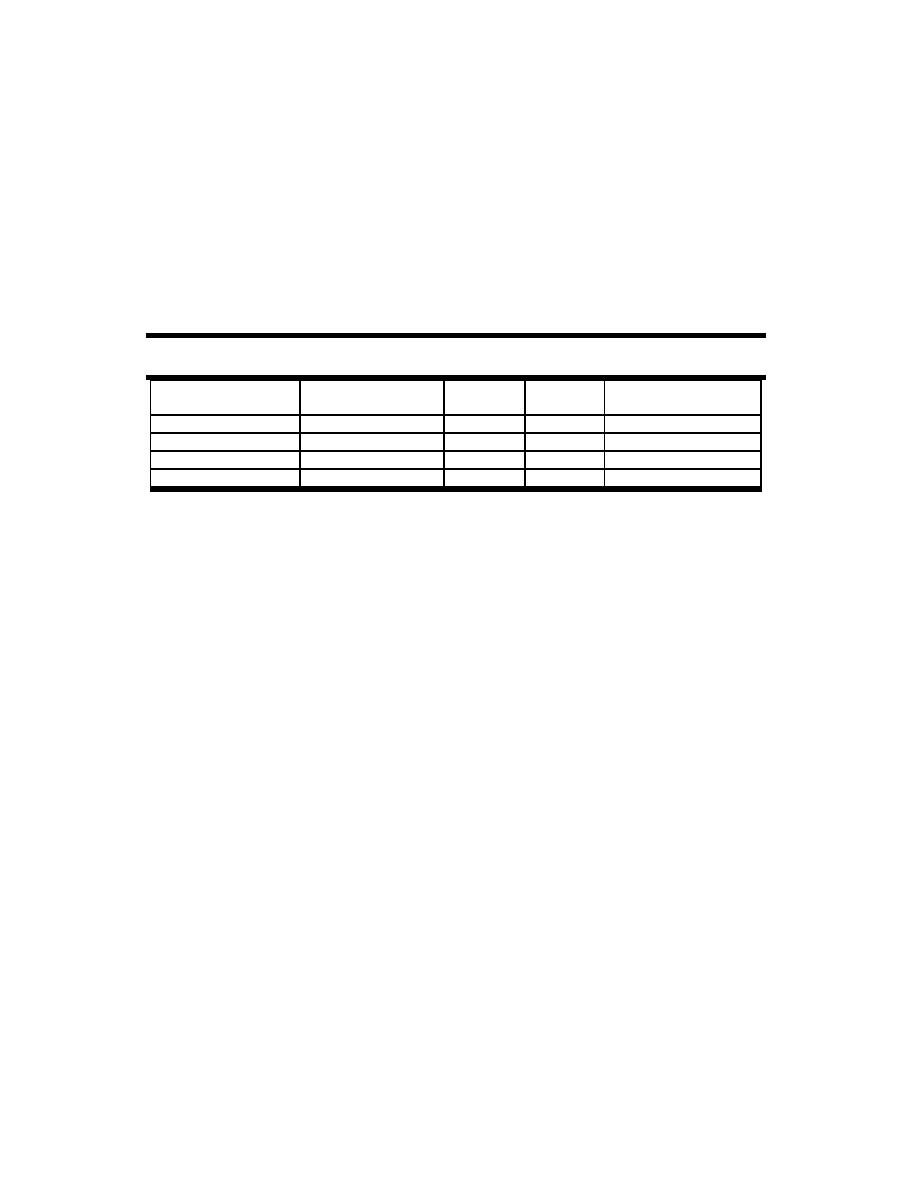
EM 1110-2-2907
1 October 2003
(3) Shadow Removal from Data. The effect of shadowing is typically caused by a
combination of sun angle and large topographic features (i.e., shadows of mountains).
Table 5-1 lists the pixel digital number values for radiance measured from two different
objects for two bands (arbitrarily chosen) under differing lighting conditions. Pixel data
representing the radiance reflecting off deciduous trees (trees that lose their leaves annu-
ally) is consistently higher for non-shadowed objects. This holds true as shadowing ef-
fectively lowers the pixel radiance. When the ratio of the two bands is taken (or divided
by one another) the resultant ratio value is not influenced by the effects of shadowing
(see Table 5-1). The band ratio therefore creates a more reliable data set.
Table 5-1
Effects of shadowing
Band A
Band B
Band A/B (ratio)
Tree type
Light conditions
(DN)
(DN)
(DN)
Deciduous Trees
In sunlight
48
50
0.96
In shadow
18
19
0.95
Coniferous Trees
In sunlight
31
45
0.69
In shadow
11
16
0.69
(4) Emphasize Image Elements. A number of ratios have been empirically devel-
oped and can highlight many aspects of a scene. Listed below are only a few common
band ratios and their uses. When choosing bands for this method, it is best to consider
bands that are poorly correlated. A greater amount of information can be extracted from
ratios with bands that are covariant.
B3/B1 iron oxide
B3/B4 vegetation
B4/B2 vegetation biomass
B4/B3 known as the RVI (Ratio Vegetation Index)
B5/B2 separates land from water
B7/B5 hydrous minerals
B1/B7 aluminum hydroxides
B5/B3 clay minerals
(5) Temporal Differences. Band ratio can also be used to detect temporal changes
in a scene. For instance, if a project requires the monitoring of vegetation change in a
scene, a ratio of band 3 from image data collected at different times can be used. The
newly created band file may have a name such as "Band3'Oct.98/Ban3'Oct.02." When
the new band is loaded, the resulting ratio will highlight areas of change; these pixels
will appear brighter. For areas with no change, the resulting pixel values will be low and
the resulting pixel will appear gray.
(a) One advantage of the ratio function lies in its ability to not only filter out
the effects of shadowing but also the effects attributable to differences in sun angle. The
sun angle may change from image to image for a particular scene. The sun angle is con-
trolled by the time of day the data were collected as well as the time of year (seasonal
effects). Processing images collected under different sun angle conditions may be un-
5-21



 Previous Page
Previous Page
